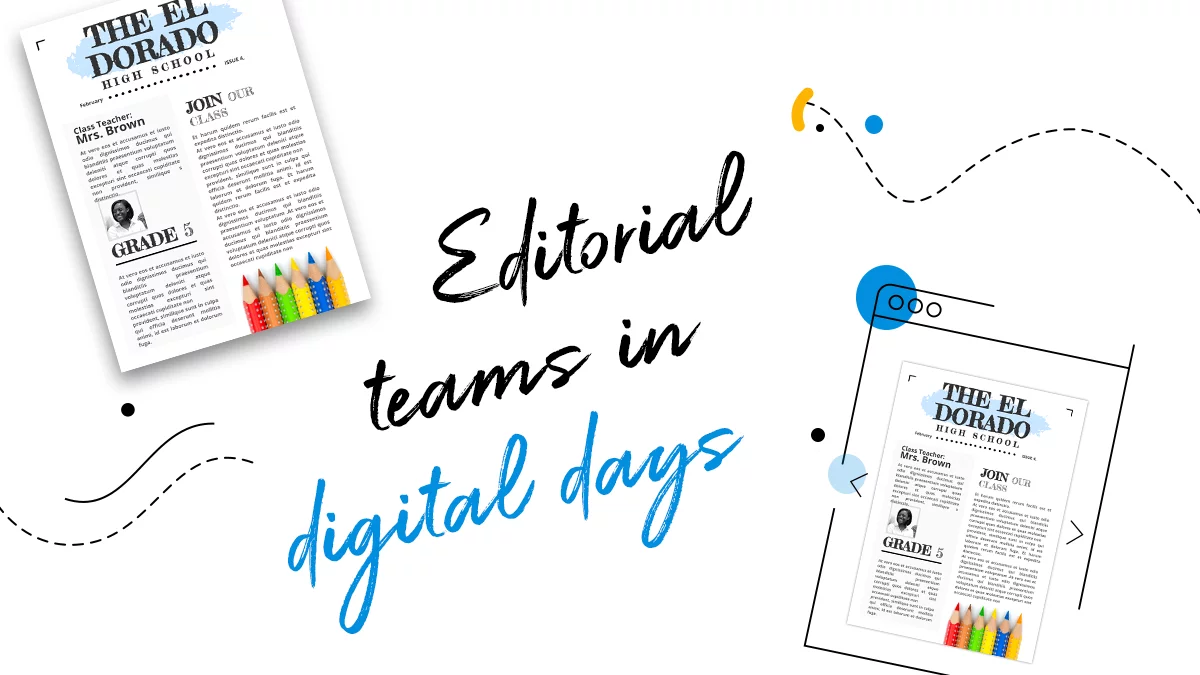Organizing editorial teams in the digital age
It’s no news these days that the publishing industry has changed a lot since the digital revolution. Twenty years ago both newspapers and magazines were restricted to ink and paper, and because of this, everybody had a clear idea of how to organize themselves in terms of editorial teams. Each person had a clear definition of their roles, which made it easy to stick to them. Nowadays, things look completely different. Sometimes, the same person thinks and conducts the whole process: he/she does both the content and design part, then proofreads the article and also shares the content on social media. One thing’s for sure: as the internet evolved, such did journalism. With the high rise of social media and mass content production, publications needed to find new ways in which to survive.
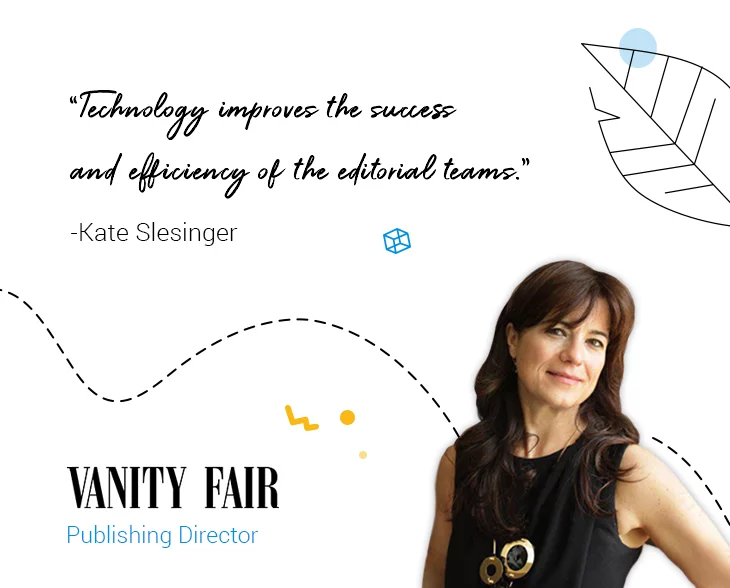
And they did. Today, the editorial teams are nothing without technology. And I’m not the only one who believes this. Kate Slesinger, a publishing director at Condé Nast for more than two decades, declares that “technology has facilitated production enormously and has radically changed the way in which images, for example, are committed to paper.” I would go even deeper and say that technology improves the success and efficiency of the editorial teams, that’s why journalists should take advantage of this opportunity to the fullest. As Kate Slesinger continues, “technology has completely changed the speed with which everyone does business and also with which we can get messages – whether editorial or advertising”.
Besides making the editorial teams more successful and effective, technology also brought some new roles to the journalism world. Of course, let’s not forget the old ones that have the same importance. Together, they make the perfect editorial team. Let’s take a moment to discuss them in-depth in the next chapter. I’ll start with the classic ones, and then go on to the new ones.
Classic roles in an editorial team:
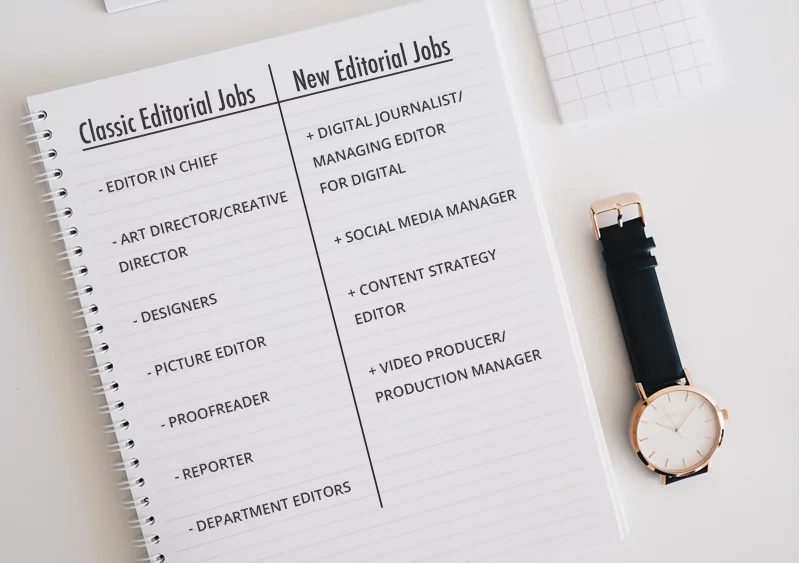
Editor In Chief
Of course, I had to start my list with the editor in chief. Everybody knows that the editor in chief represents the key figure in every publication. I really have to mention here Anna Wintour who has been working for Vogue for more than 20 years. The editor has to be full of ideas and a great journalist because the editor has the ultimate responsibility for everything that gets published. Also, he has to be a great leader for his team that follows him on this journey.
An editor has to work with the entire team and decide how the publication is going to look. The editorial team usually has meetings every week where they discuss together the whole process. Each person within the team knows well their responsibilities and has their own role in the publication creation. Sometimes when the editor has too much work to do, they ask for the help of a deputy or assistant.
Art director / Creative director
The next one I’m going to talk about within the editorial team is the art director, also known as the creative director. He is responsible for the organization and commission of all the artwork within the publication. The creative director has to work with a bunch of designers to make the newspaper or magazine look both professional and stunning. The success of every publication depends on the design part too; that’s why the art director has to give clear instructions to its design team. There were many cases when good publications were ruined by poor design.
Designers

Like I said before, the design team works together under the art director’s supervision to design the editorial magazine or newspaper. They need to follow the guidelines, but also express their creativity as much as the art director allows it. There are some art directors who like to oversee every design detail; while there are other directors who are happy to only delegate the work and check it from time to time. No matter the situation, in the end, the design part has to look gorgeous and suitable for the content part.
Picture editor
The picture editor has an important role in the editorial team. He’s responsible for bringing publications to life by choosing the most suitable and high-quality images and arranging them on pages. The picture editor has to work especially with the art director to make sure he’s on the right track.
Proofreaders
Even if their role might seem simple and not so stressful, it’s actually really important and quite strenuous. The proofreaders have to check all the content and correct the grammar and spelling. They also cut excess content.
Reporter

Here comes the role of a reporter in the editorial team. He gathers facts and information about various topics such as politics, business, education, sports, environment and so on. After the gathering part, the reporter writes the story in an objective way. He also has to present the news in a readable style to inform the reader.
Department editors
As you already know, each publication has its own different departments. If you’re working for a fashion magazine, for instance; then the editorial team will have both a fashion editor and a beauty editor. Maybe there are also some fashion or beauty assistants who help when there’s a lot of work to do. Each of them is responsible for their sections of the publication and work closely with the editor in chief and art director.
New jobs:
Digital journalist/ Managing editor for digital
I’ll start my list of new jobs in the editorial team with the digital journalist, also known as managing editor for digital. In general, a digital journalist’s role is that of a print and digital writer. His content focuses on the day’s news relevant to the reader. His articles should always be timely, accurate and shareable so that they bring traffic for the magazine’s website. But nowadays things can change, as I’ve already mentioned before. There are cases when a managing editor for digital conducts the entire process of publication by himself. This includes content, design, video and also social.
Social media manager
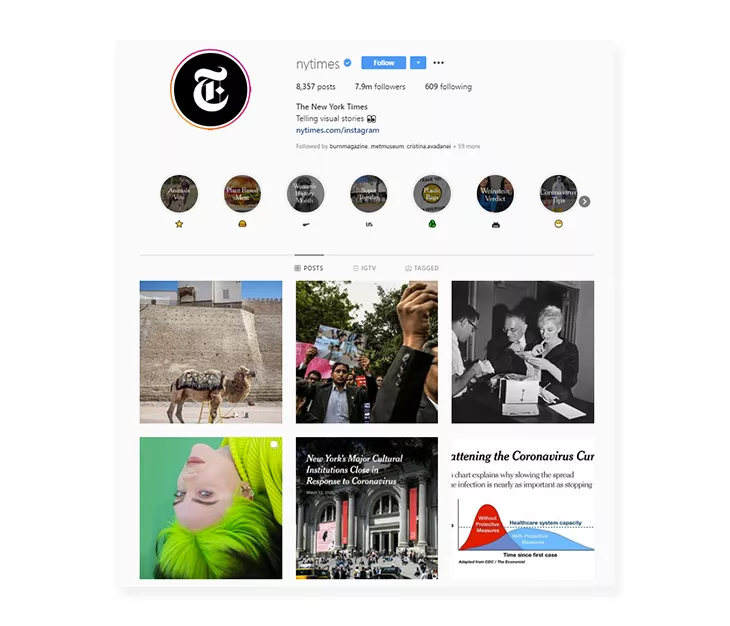
The role of a social media manager in an editorial team is quite a logical one. He is responsible for sharing the content on different popular platforms such as Facebook, Instagram, Twitter or LinkedIn. The social media part helps a magazine or newspaper interact directly and quickly with its audience. It’s also an important part of increasing brand awareness. Take for instance the New York Times, who has a massive following on Instagram. Their BIO is – Telling visual stories. A world-renowned newspaper has understood the utmost importance social media is. They share Instagram stories with the latest news and editorials, IGTV videos about political debates and more. Almost every big news outlet has understood the power social media can have for content distribution.
Content Strategy Editor
The content strategy editor focuses mainly on the whole content process. He gathers all the information and data that he has and then creates specific and appropriate content according to branding and target audience. And this is not all. The content strategy editor also thinks of different and remarkable ways of delivering and promoting the content.
Video producer/ Production manager

Video producers, or, as they like to be called – the production managers – make visual things happen. They coordinate and manage each aspect of the video process from beginning to end. A video producer also comes up with creative ideas for the scripts, establishes on-set safety precautions, organizes logistics, works with make-up artists and hires graphic artists to help him on the way. Hence, we can say that nowadays, a video producer is a one-man show.
Let’s take for example Lucy Fink who works as a video producer for Refinery 29. She takes us into her daily work life in which she explains bits of her work such as making notes on the video she is working on. Even though the main idea and production part is handled by herself; she works alongside a cameraman and an editor to produce high-quality video content. Which, for Refinery 29 is a working strategy. Their Youtube channel has over 2.4 million subscribers.
Tips that help you organize an editorial team in the digital age
We’ve talked about the publishing industry then and now and also about classic and new roles in the editorial team. Now it’s time to move to the next chapter: tips and tricks that help you organize an editorial team in these digital days. Let’s say that you’ve been thinking for a while to start a publication. You’ve gathered some information and knowledge. Then, you’ve found some passionate and talented people who are willing to join you on this journey. But here come the complicated questions: how to organize your editorial team when you don’t have experience in this field? How do you make sure everyone is reaching their full potential within the editorial team? How to make things work as well as possible? Don’t worry, for every one of your questions, I’ve got an answer. Here are some tips that hopefully will clear up your confusion.
Establish editorial teams that base themselves on trust

Studies have found that trust is a primary factor for successful and long-lasting editorial teams. The first one who has to set an example in this regard is the editor in chief. His team will follow his example and will learn to trust their teammates, as well. An editor in chief doesn’t need to always micromanage the team. He simply has to rely on his colleagues and to believe that they know what they’re doing. My advice is to train your editorial team as well as possible and give them clear guidelines. Encourage them to use their own creativity and then trust the whole publication process.
Joe Posner, the head of video from Vox – liberal-leaning American news and opinion website, reiterates the ideas I’ve mentioned above about trust: “People trusted me, fully, in a way I’d never been trusted before. And I trusted them. With this trust, we quickly kept getting better and better, pushing each other to new levels, so much so that what people know as the <<Vox video>> style couldn’t plausibly be claimed by any one person.” A simple trust conducted to build brand awareness and popularity. See now how important is confidence in an editorial team?
Set up efficient communication channels

Communication is the key when it comes to organizing editorial teams. When people communicate, things get better. No matter your role within the editorial team, make sure that you express your thoughts and requirements accurately to your colleagues. It’s crucial to have a clear idea of who’s doing what. Not only because each colleague needs to know what their responsibilities are, but also because the cooperation is more effective. You know exactly whom to contact when you encounter a problem.
Speaking about communication and its channels, it’s highly important to mention here workspaces. You can keep each of your projects separate from the rest. Workspaces are the best communication channels when you’re working on multiple projects with multiple colleagues or even clients. You can give specific access to people and also keep each project in its own environment. Trust me; this is the easiest way to be more productive and organized as a team.
Think of running journal audits from time to time
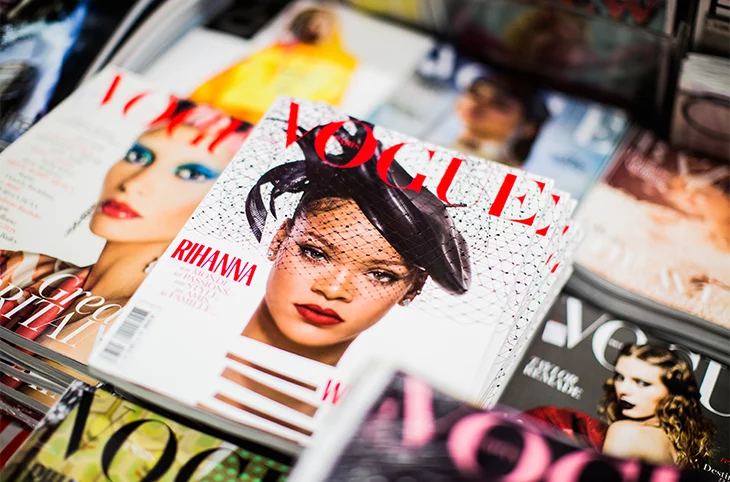
You know what they’re saying. If you want to improve your work, you first need to see what parts of your work go well and which may need some bettering. The best solution to do so is to run self-audits from time to time. But my advice is to let your newest colleagues within the editorial team conduct the audit. Why? Because the newest are always the ones who are going to be able to help you improve. They are clueless about how things work in the publication process, so they can come up with their own creative ideas.
All in all, the editorial teams organize and operate the most effective when they are open to improvement and development. Magazine or newspaper editorial teams have to be able to readjust and realign every few years because technology is continuously evolving. Journalists have to always be forward-looking.
Wrapping it up
Whether it’s a magazine editorial team or a newspaper editorial team, both of them need improvement and organizational advice every once in a while. Especially since the high rise of technology changed so much the publishing industry. Hopefully, today’s article answered all your questions and gave you a boost to inspire your journalist colleagues.
